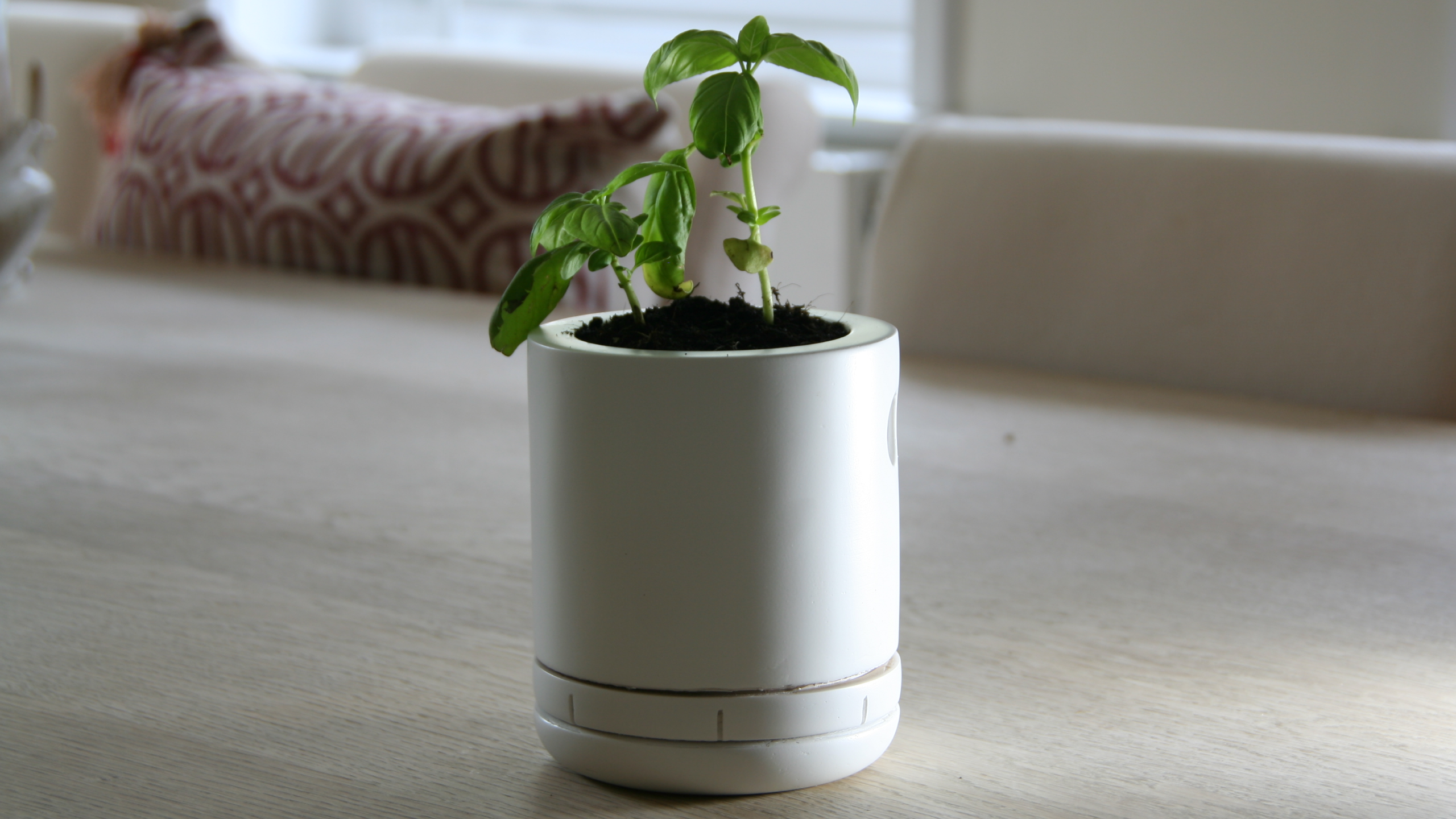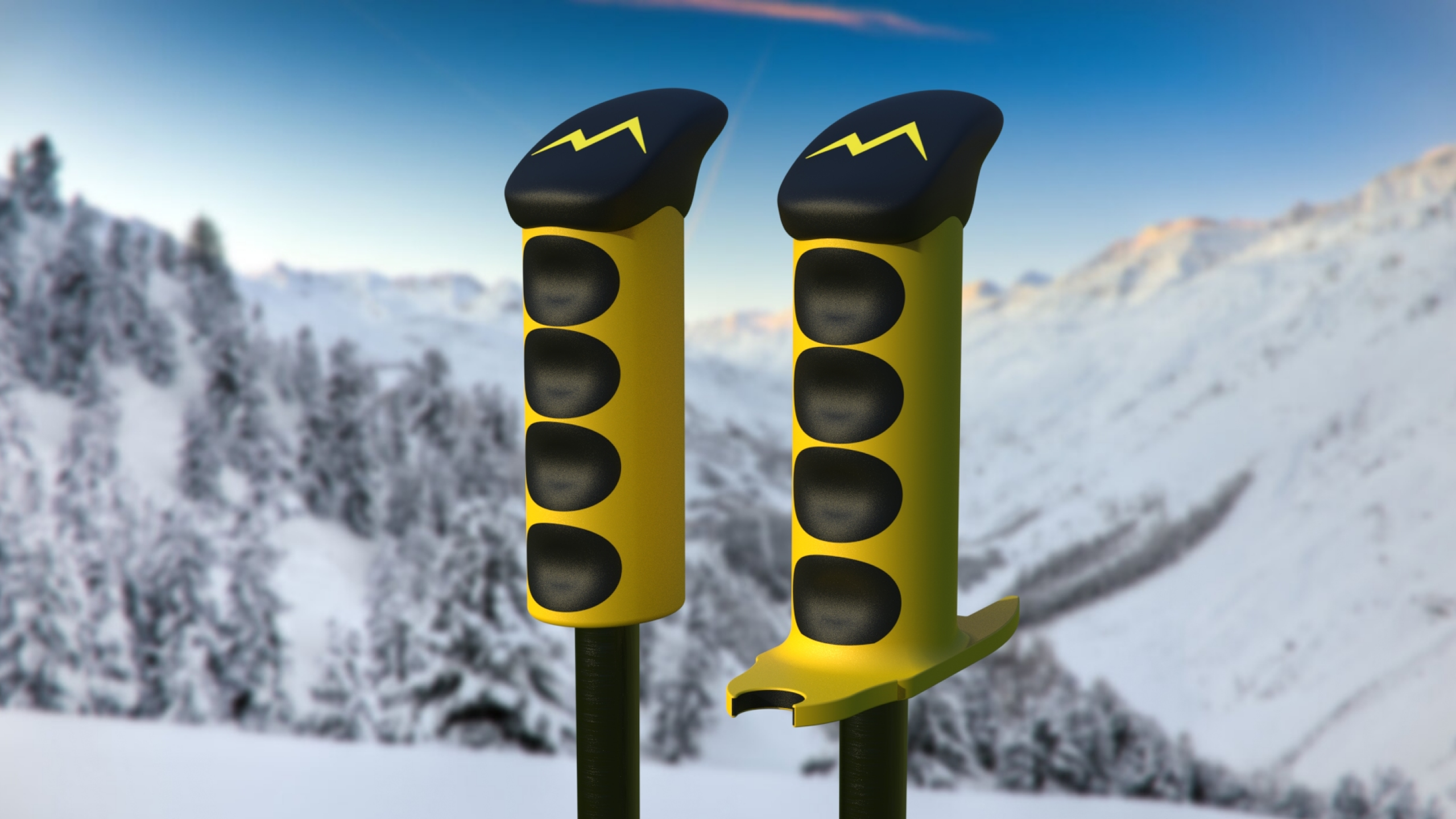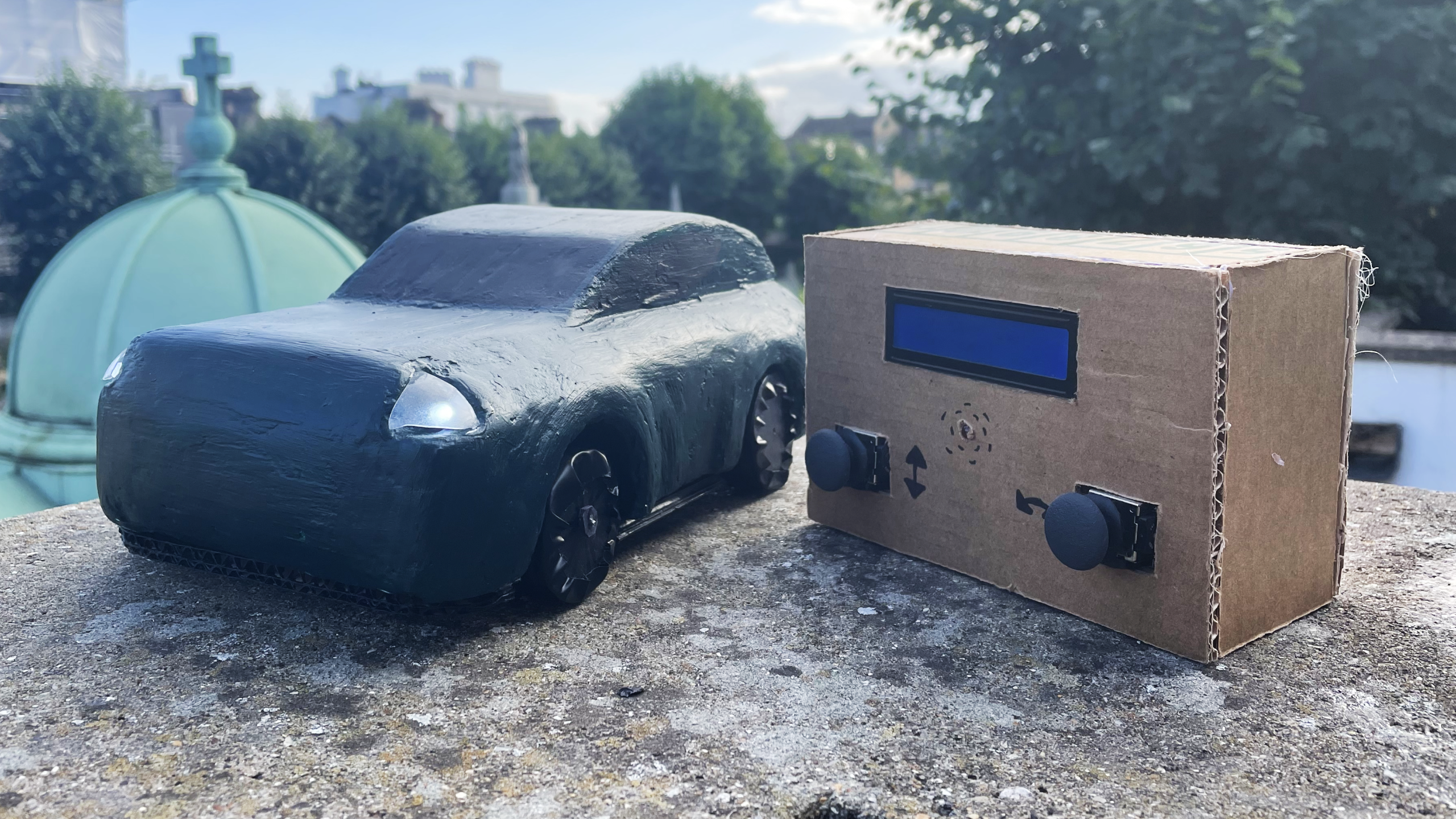The Congested Future of Cities
A report from the United Nations estimates that 68% of the world population will be living in cities by 2050 (UN, 2021), double the current urban population. With urbanisation increasing, cities are becoming the focal points of the world. It is therefore crucial to predict future trends in these areas, and identify potential issues, in order to mitigate challenges in this setting. To get a well-rounded view on future urban areas, a STEEP analysis was undertaken, and from this key related issues were picked out and researched further. Congestion was found to be the key challenge of future urban environments.
Future Scope Wheel
By producing a future scope wheel, future issues could be identified, as well as future technology and other enablers in the social, environmental, economical and political categories which will be utilised throughout the project in the developing the solution. From the scoping the key issues around congestion could be realised in order to form a scenario and objective aim, as well as discovering enablers for use during the design and development of the product service system.
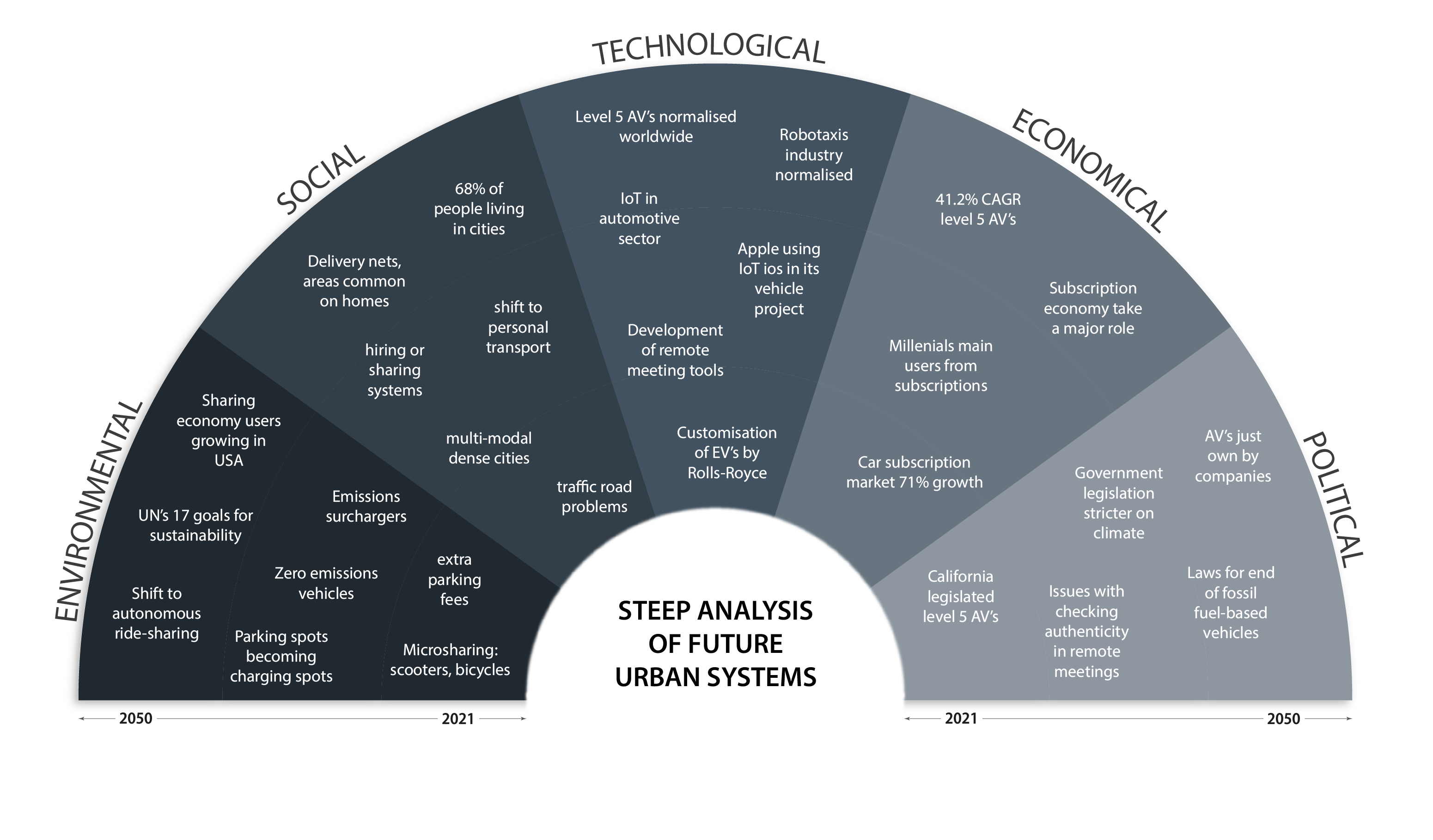 Figure 1. Future scope wheel
Figure 1. Future scope wheel
Users Demand For Private Rides
From a report by Mckinsey (McKinsey, 2021), the COVID-19 pandemic has increased the proportion of urban users taking private rides. This increase and high percentage of users taking private rides directly correlates to higher urban congestion. It is evident from data in the Mckinsey report that higher number of people using personal transport contributes to a higher traffic congestion, in many major cities. There is an increase in services such as Zipcar (Zipcar, 2022), but this still leads to users using an individual vehicle, with no significant improvement to cities public transport, or ride-sharing schemes such as Uber Pool and Lyft (Onde, 2019), this proportion of people using private rides is not likely to decrease in the near future.
Underfunded Transport Infrastructure
In many countries, the infrastructure is heavily underfunded.. American Society of Civil Engineers published a report (TTNews, 2020) stating that transportation infrastructure has been underfunded for years and that $4.1 trillion will be needed from 2020 through 2039 to sustain infrastructure. During this period, about $2 trillion spending is projected, leaving a gap of $2.1 trillion. This is the same in areas such as the UK (AECOM, 2022), and with around 65% of congestion from roadworks and bottlenecks (Highways.org, 2015), along with future underfunding this will continue to be an issue.
Unsustainable Vehicle Utilisation
With users owning their own vehicles, it is a known fact that cars are heavily underutilised. On average, cars are parked 96% of their life (RAC, 2021), and in cities such as London, they take up over 14km2 in space (City Monitor, 2020). Not only is valuable urban space being taken up by vehicles, but the amount of resources in a future car such as the lithium batteries are also being heavily underutilised. With the prediction that lithium is due to run out potential as soon as 2040 (Pv Magazine, 2020), and due to increasing demand, the supply of it could be under stain within the next few years (The Irish Times, 2021), this utilisation issue is a crucial issue to resolve.
 Figure 2. Future lithium supply and demand forecast
Figure 2. Future lithium supply and demand forecast
Increase in Delivery Demand
Between 2020 and 2030, the global market for last mile delivery is expected to witness a CAGR of 20.3% (P&S Intelligence, (2021). There are also more varieties of deliveries, and with increasing consumer demand of deliveries in terms of the speed of the service, so it is critical there is infrastructure to meet this. It is likely that there will be disruptor's in this delivery industry, with companies such as Magway (Magway, 2022) revolutionising middle mile delivery by using underground tunnels to deliver parcels from warehouses to 'portals' in urban areas, 3000 articulated lorry loads through a single 1m diameter pipe, every single day. However, this does not solve last mile delivery. Magway are planning to interface with other future vehicles such as electric delivery vans, as well as autonomous delivery bots, however these last mile delivery forms could still have a negative impact on traffic flow. Another solution to delivery is drone technology, which has undergone trials from global companies such as Amazon (Wired, 2021) to solve this last mile delivery issue, but issues with drones range and air traffic pollution are large limitations for this technology.
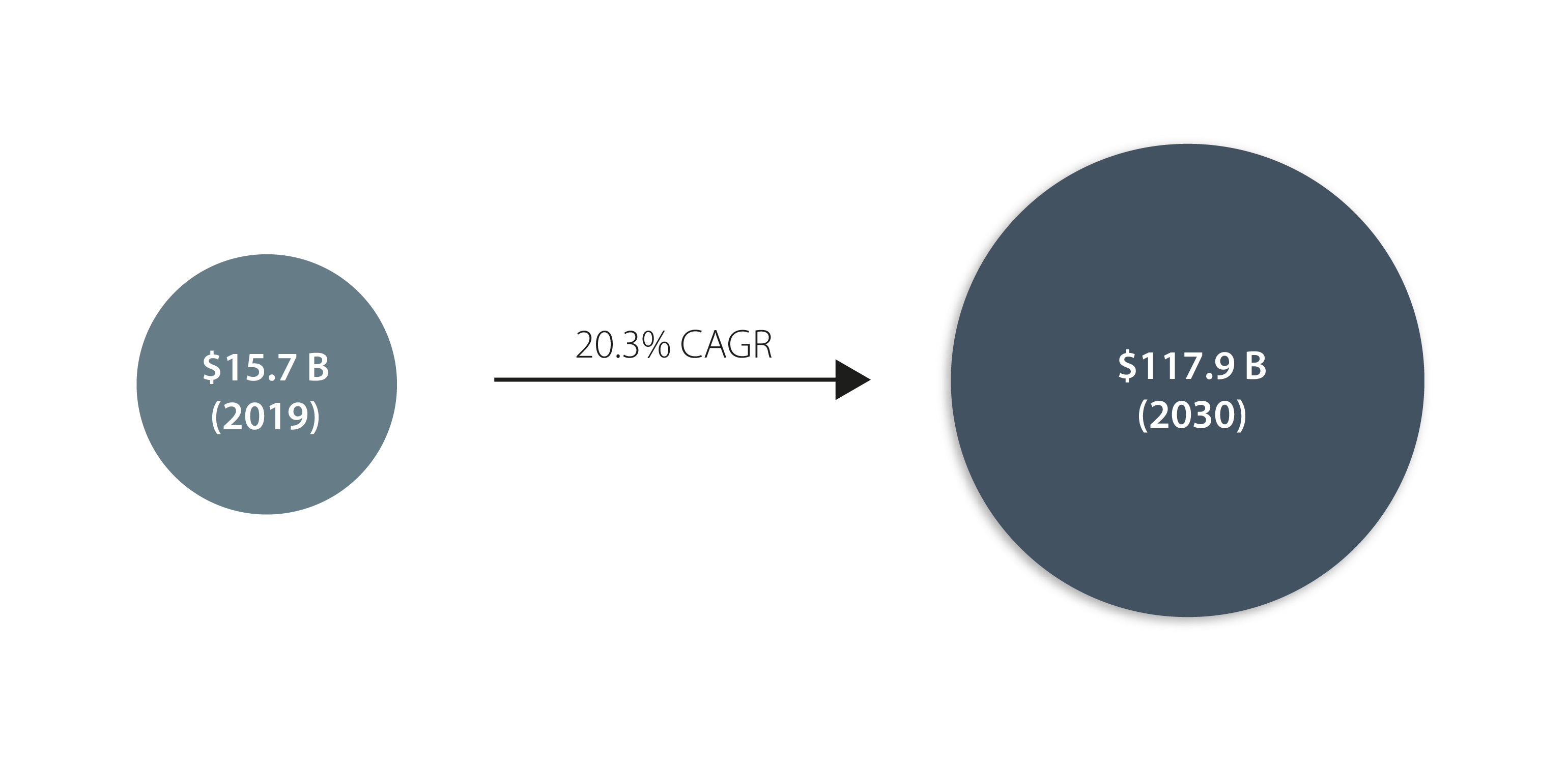 Figure 3. Growth in the last mile delivery market
Figure 3. Growth in the last mile delivery market
Project Definition
From the future scoping, it is clear to see that urban congestion is going to become a huge issue in 2040. This is made up of 3 main drivers; users lack of wanting to move to share mobility, the low utilisation of vehicles, and the increase in the delivery sector.
From this a future scenario can be realised - Level 5 fully autonomous vehicles have been legislated in urban environments, but companies operating these services have trouble meeting needs of private travelling users due to the public feel of their shared mobility vehicles. Therefore, congestion is worsening due to high private vehicle usage, and also due to an increase in delivery demand.

From the future scenario it is clear that there are 2 challenges; ensuring private mobility users, defined as 'premium users' shift to shared mobility and dealing with the increase in delivery demand to prevent higher congestion. These are combined to form an overarching project aim.
System Level Concept
From the two design aims of parcel delivery and shared premium mobility, they were combined to form an overall proposed system. This system makes use of technology enablers such as drones, revolutionised middle mile delivery, and connected vehicles as well as infrastructure through 5G. The breakdown is done using the C4 method. This is 'level 1' of the system which is a simplified version so that an overview of all aspects can be clearly seen. For example, in the next level of the C4 diagram, the AV system box can be broken down further.
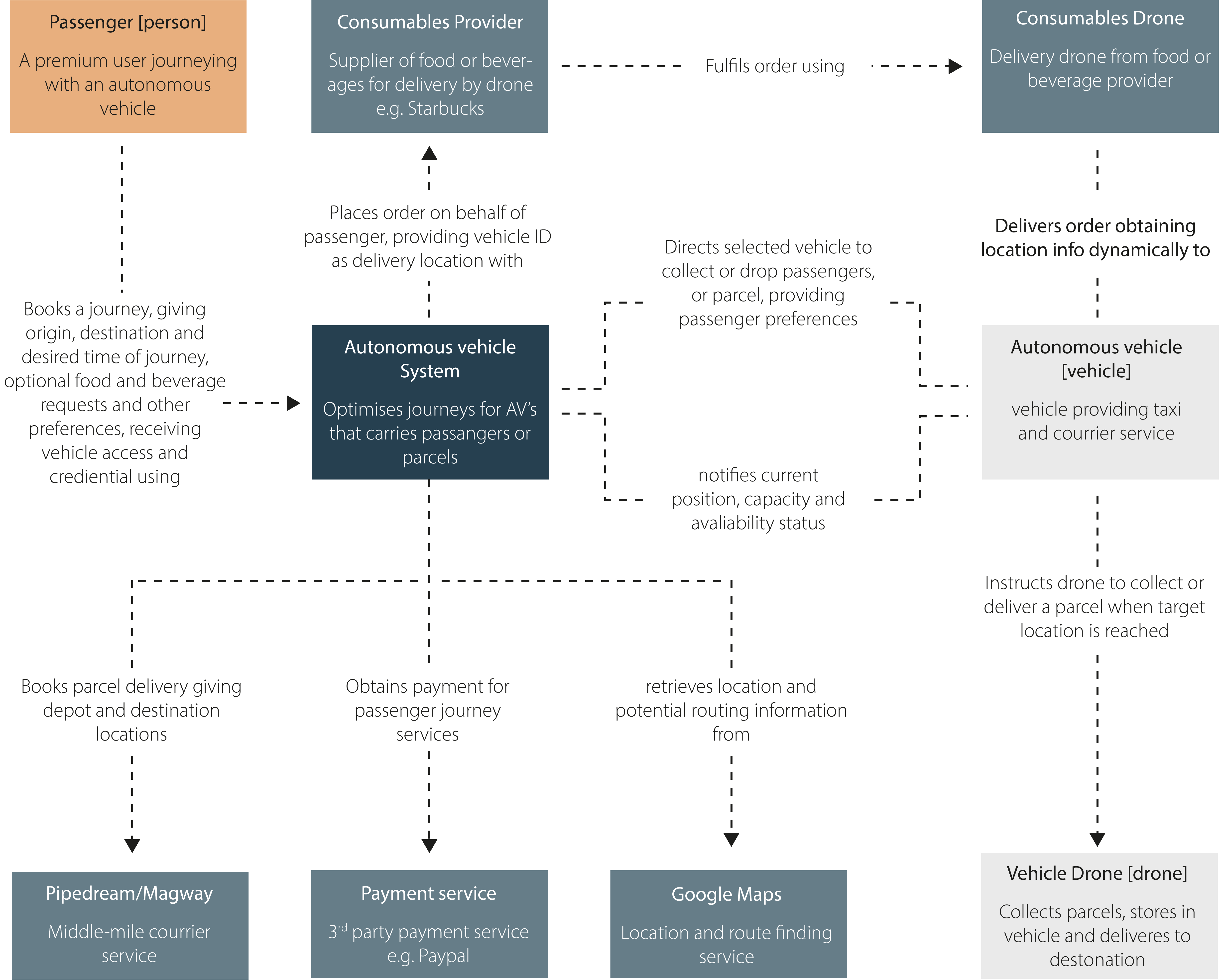 Figure 4. C4 level system diagram
Figure 4. C4 level system diagram
The principle of the operation of the system is that the fleet of vehicles in the urban areas will be predominantly setup to user 'mode' during the peak demand for travel, and at off peak times they will mostly transform to parcel mode. With the enabler of 5G in urban areas so that cars are connected to a central system, which can optimise the fleet of vehicles depending on the demand. This optimisation will be further developed.
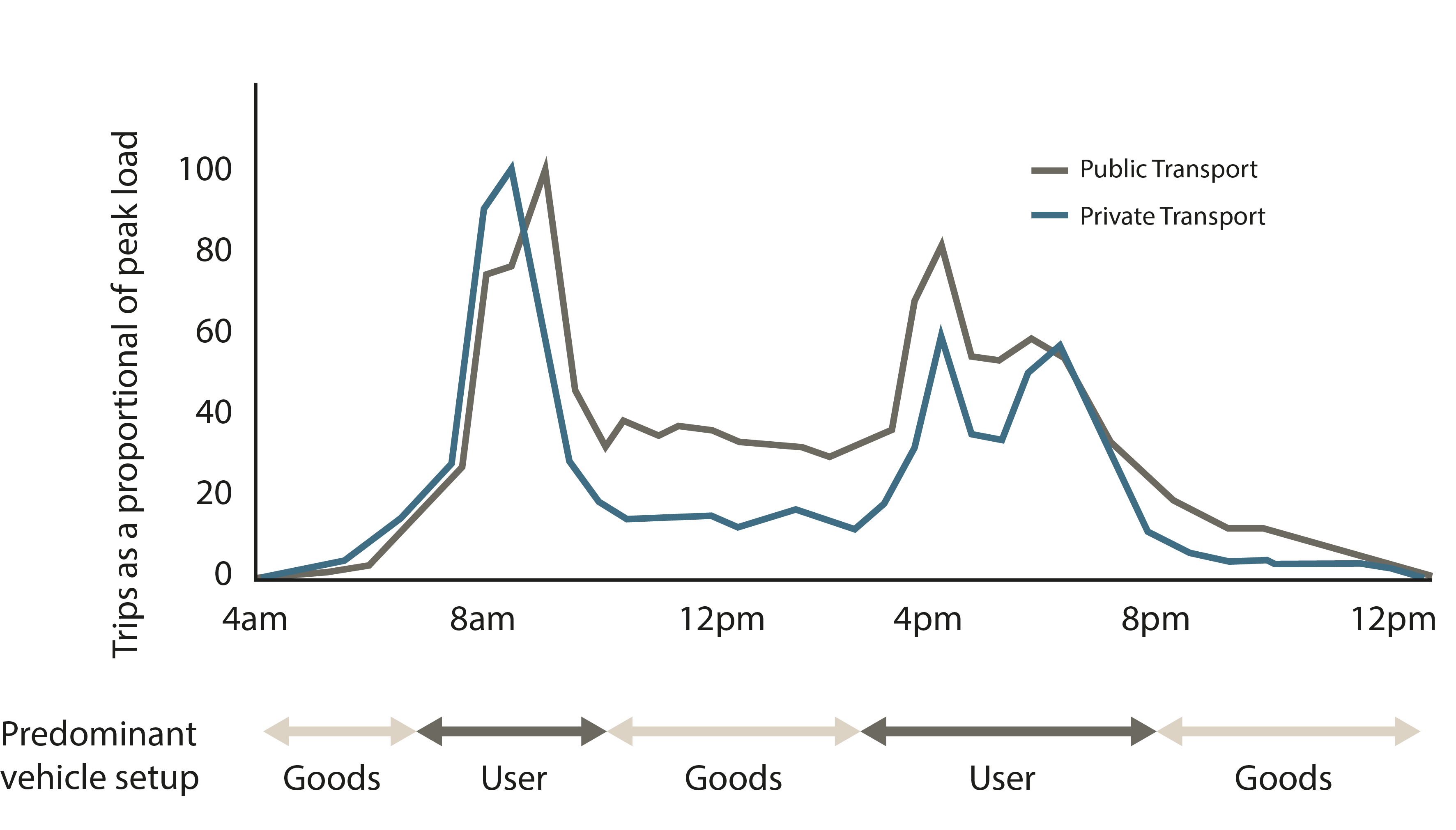 Figure 5. Showing times of predominant vehicle setup
Figure 5. Showing times of predominant vehicle setup
By using this system principle, the vehicles will be utilised more and therefore less dead hours. There will also be less vehicles manufactured, and the vehicle is designed to be a '2 in 1' multi-purpose vehicle, leading to environmental benefits including a reduction in lithium battery manufacturing as this is a resource likely to become scarce or even run out in 2041 (Pv Magazine, 2020). By getting private mobility users to share, there is potential to fit users from 4 separate vehicles into 1, greatly reducing congestion. By delivering goods at off peak times, the number of delivery vehicles on the road at peak times will also be decreased. It will also allow goods to be delivered outside of normal delivery driver hours, but at time when people are likely to be home.
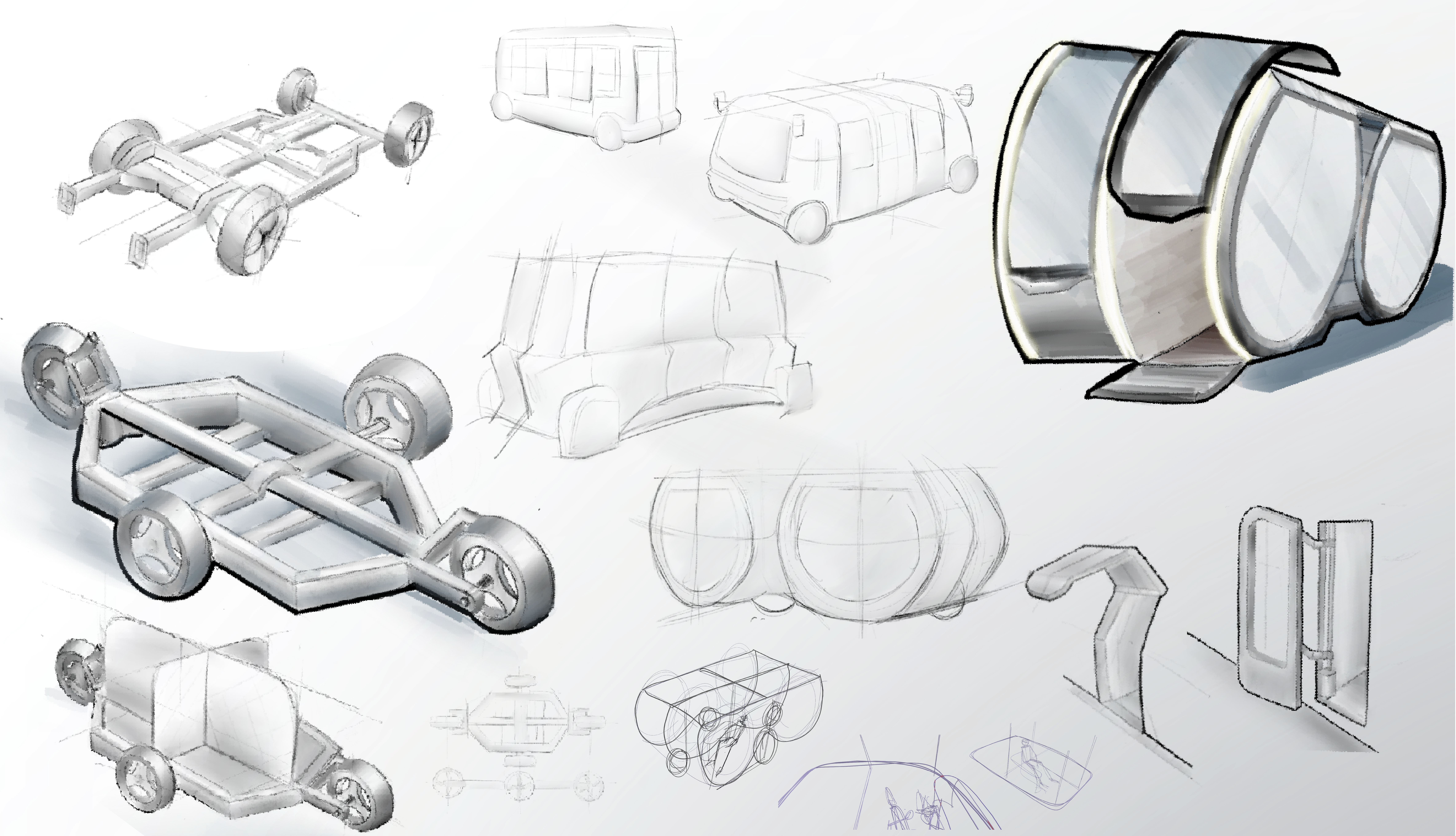 Figure 6. Early-stage sketches of the vehicle design
Figure 6. Early-stage sketches of the vehicle design
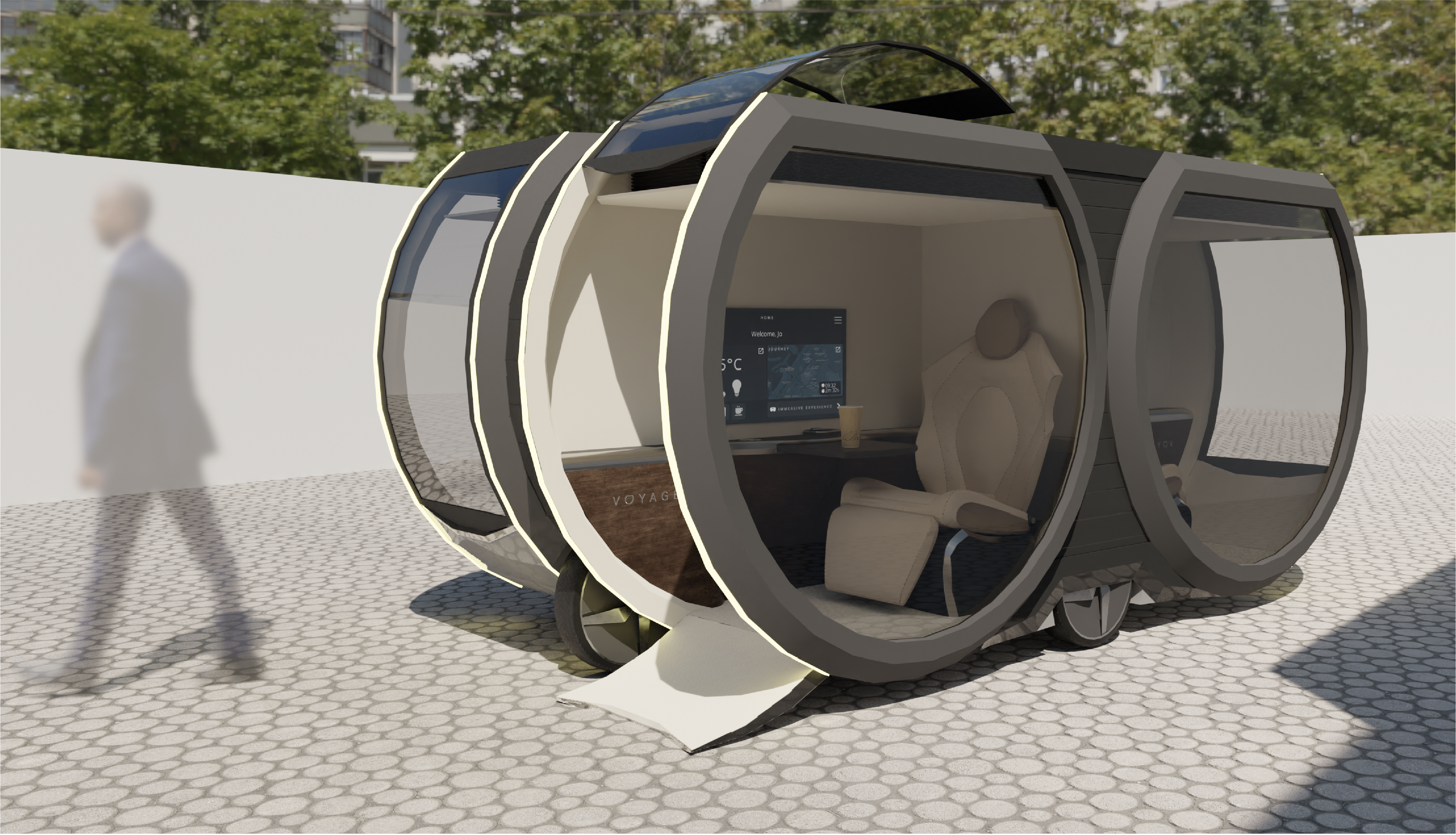 Figure 7. Outside view of the automotive vehicle
Figure 7. Outside view of the automotive vehicle
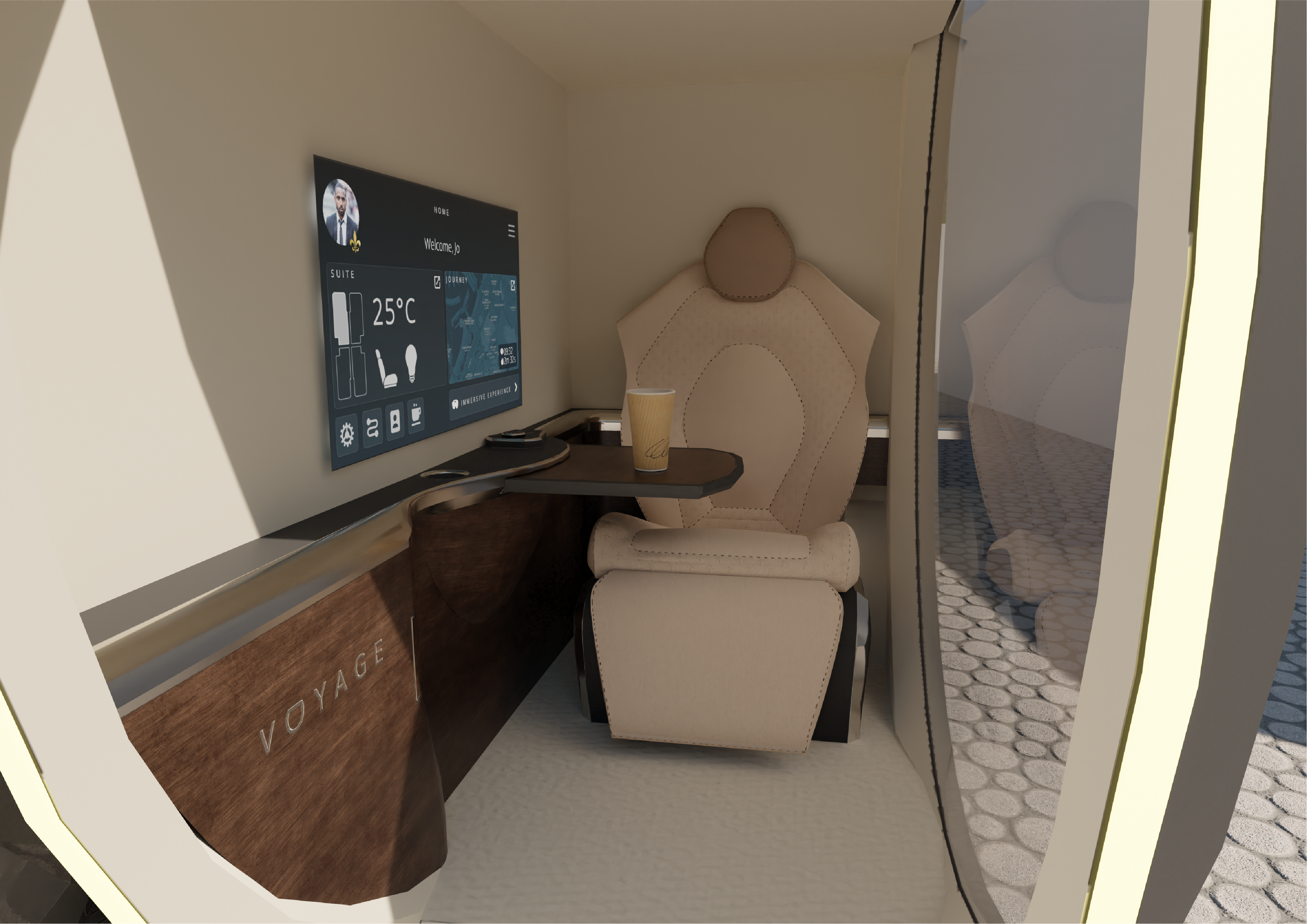 Figure 8. Interior of the vehicle
Figure 8. Interior of the vehicle
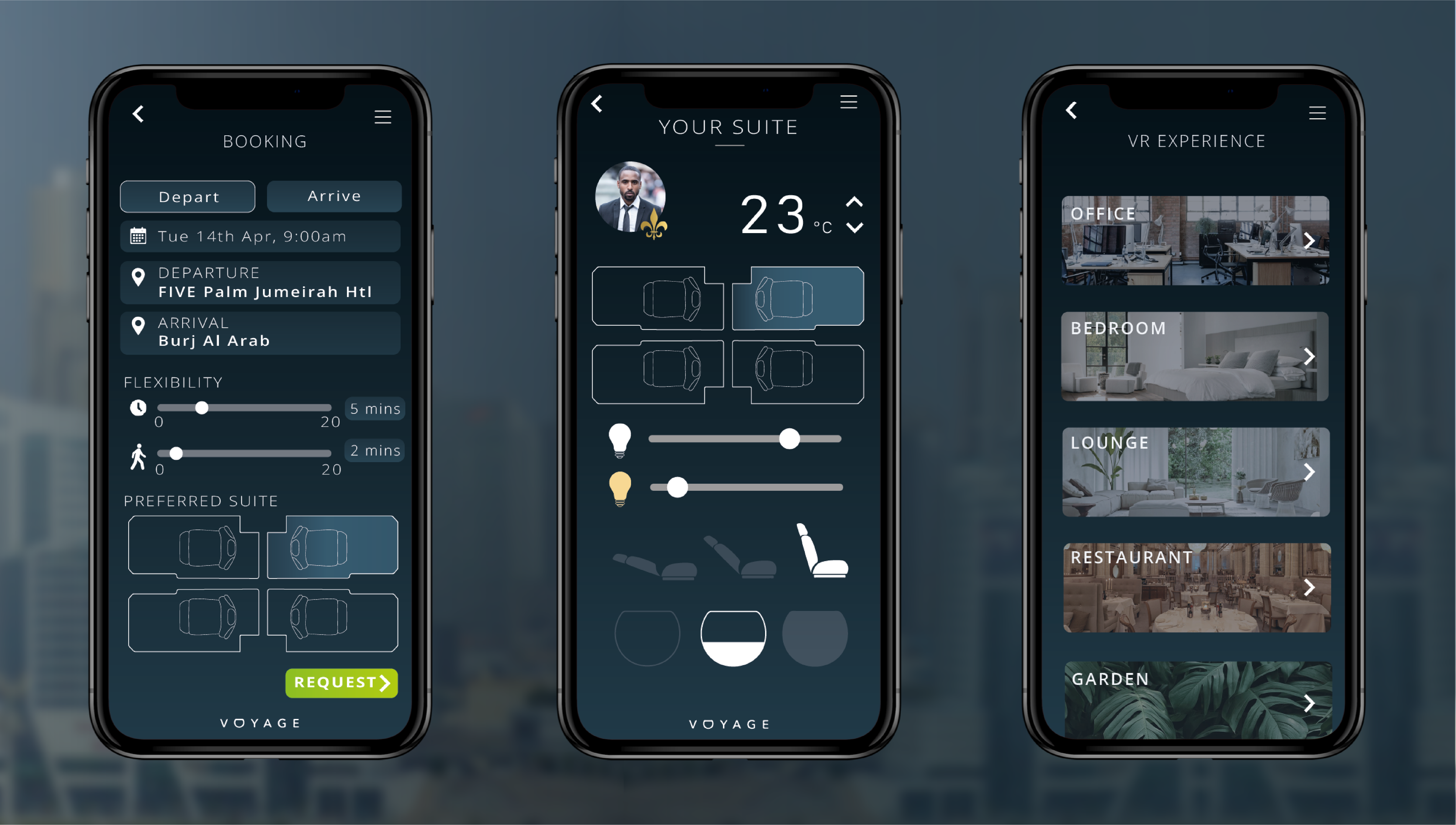 Figure 9. App interface
Figure 9. App interface
 Figure 10. Passenger mode and parcel mode of the vehicle
Figure 10. Passenger mode and parcel mode of the vehicle
 Figure 11. Mapping of urban delviery station nodes (left), and the system to load parcels onto the vehicle at these nodes (right)
Figure 11. Mapping of urban delviery station nodes (left), and the system to load parcels onto the vehicle at these nodes (right)
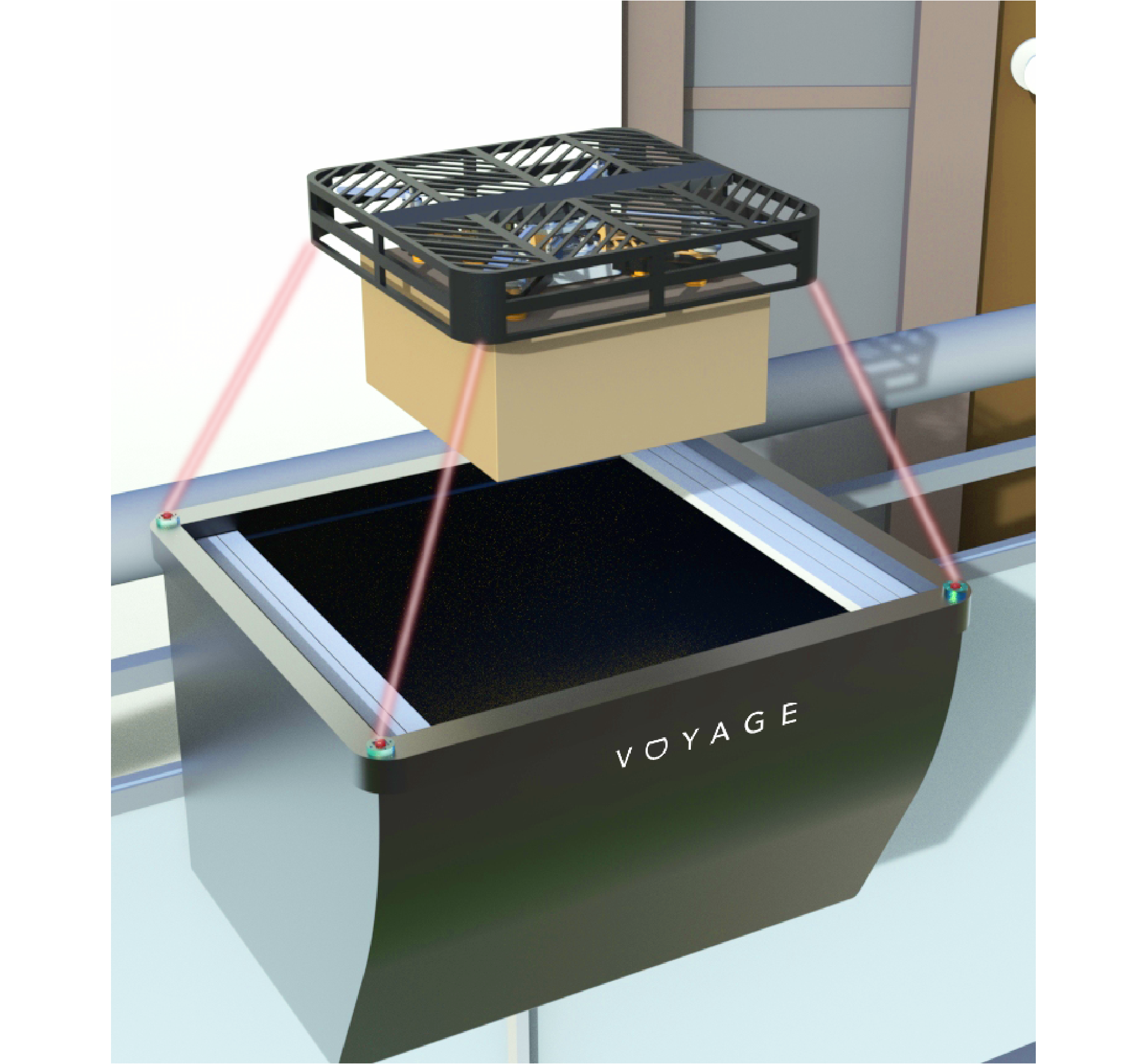 Figure 12. Delivery nets
Figure 12. Delivery nets
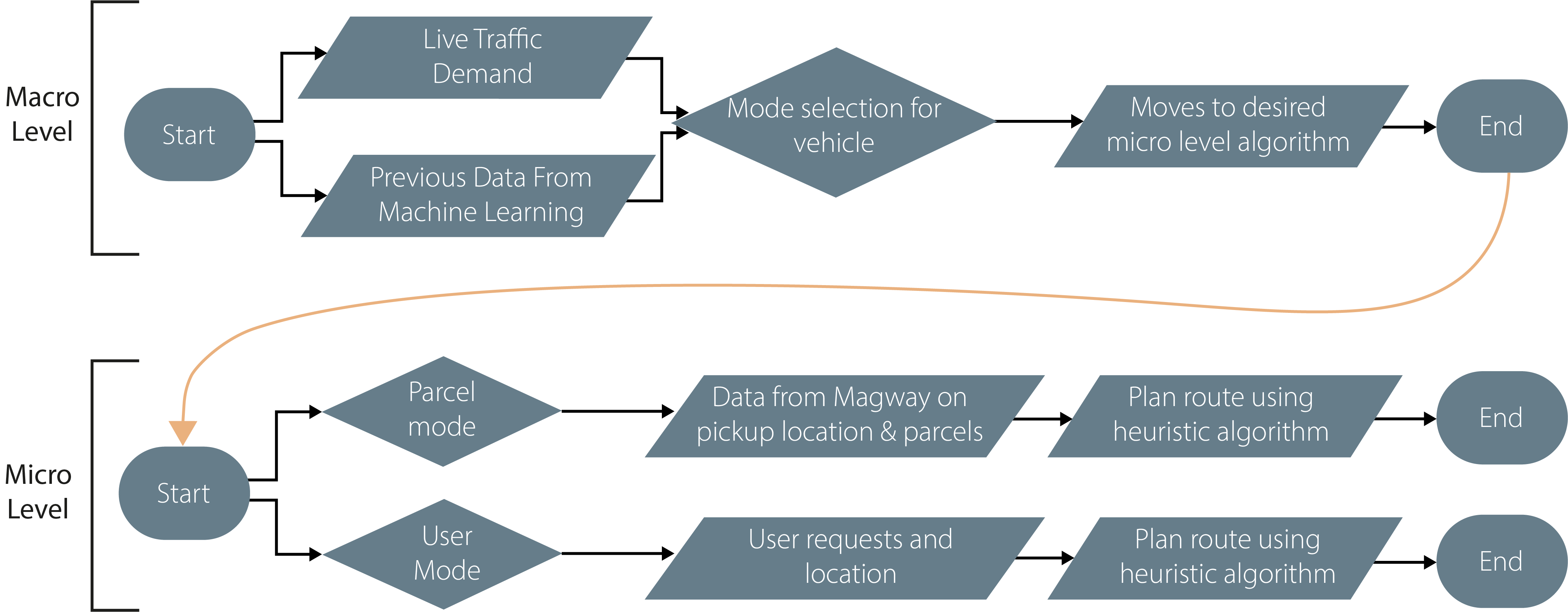 Figure 13. Heuristic algorithm
Figure 13. Heuristic algorithm
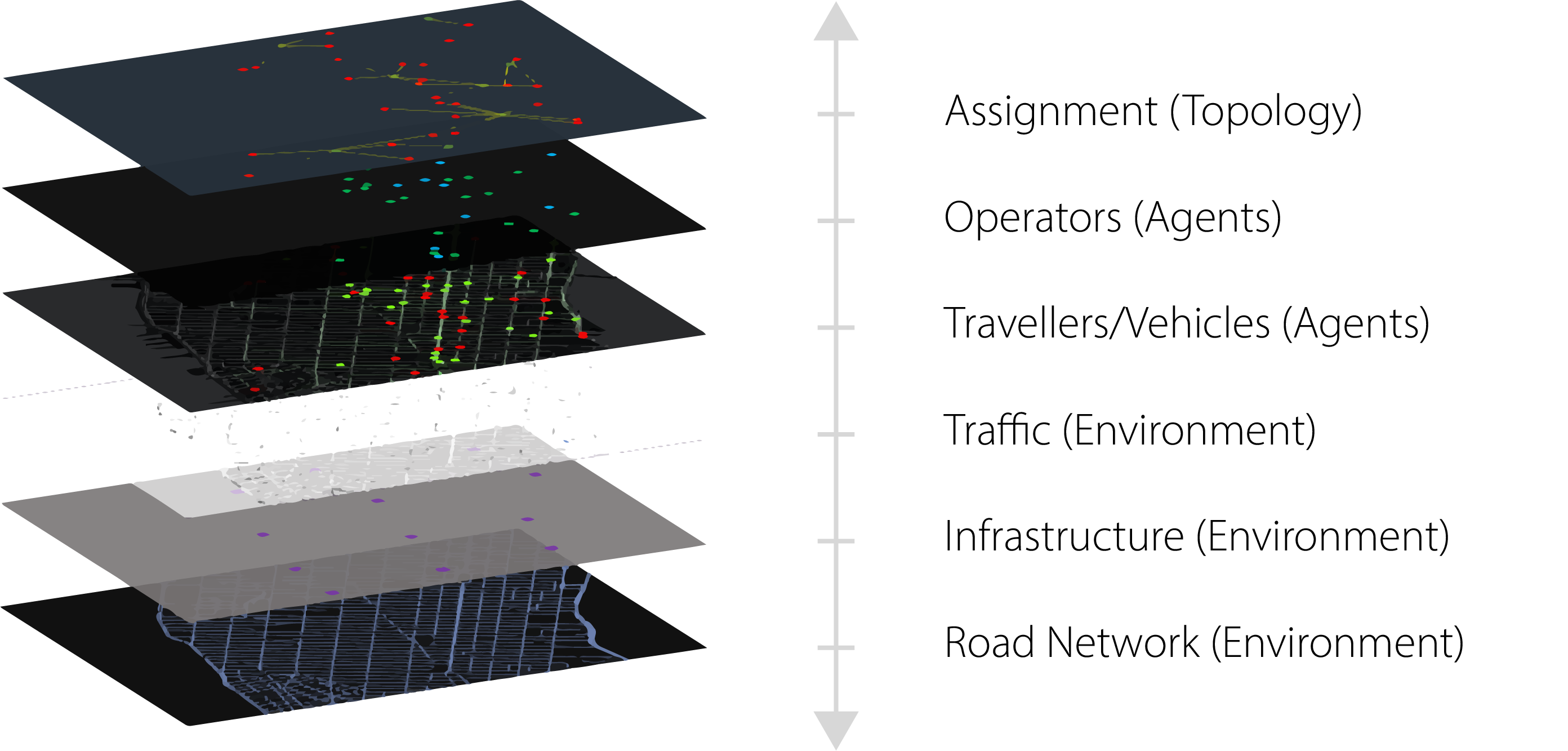 Figure 14. System layers for Agent Based Modelling
Figure 14. System layers for Agent Based Modelling
 Figure 15. Impact of VOYAGE
Figure 15. Impact of VOYAGE
